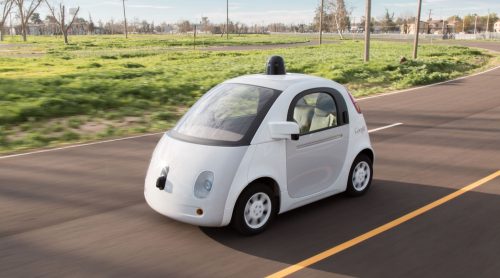
Here at stickee, we’re extra passionate about emerging technologies (have we mentioned that before?) and we have a fantastic R&D team always trying to push the boundaries of what our business can achieve.
Despite what science-fiction movies would have us believe, artificial intelligence (AI) isn’t just about robots rising to destroy and/or enslave all of humanity. Yet… So far, AI has been applied in many fields and industries to make life and work easier: from financial trading to transportation, retail and healthcare. We have virtual assistants like Siri and Alexa, self-service checkouts at the supermarket, self-driving cars are currently being tested, and machine learning is helping to automate many systems and processes which used to require painstaking human labour. Let’s take a look at the ways AI can help business – and why we think R&D matters so much.
What’s AI used for?
The main reason for using artificial intelligence in business (and everyday life) is to make things easier or quicker for humans. Taking tasks which usually require human time and intelligence and giving them to a machine can improve productivity and efficiency for the whole business, and changes the way certain roles are defined. Admittedly, this also raises questions on the sustainability of these roles, and whether introducing AI into the daily routines of companies will lead to job losses. We’ll discuss this in a bit!
We are currently at the beginning of what many eighties films called the future (Blade Runner, anyone?), and some of the most thrilling possibilities with AI are still being developed. Greg Pinnington, stickee’s Head of Technology, says: “I think one of the most exciting things at the moment is self-driving cars. NVIDIA are working on a system that car manufacturers can embed. They’re a graphics card company, but it turns out graphic cards are really good at doing the kind of calculations AI requires!” If you’re not a head of technology, here’s what this means: the company provides car makers with AI systems which are constantly being fed data in order to learn new capabilities, as well as a dedicated computer chip inside the car which receives data in real time to know what is happening around the vehicle, help it locate itself on a map, and plan the best route to take, among other things.
Self-driving cars are on everyone’s mind, from Google to Tesla, Uber, and even Facebook according to some rumours. Incorporating AI into cars to allow them to drive themselves might sound like a recipe for many disastrous accidents, but it’s actually the exact opposite: Danny Shapiro, the senior director of Nvidia’s automotive business unit, told Business Insider: “Because you have this computer brain driving the car, it doesn’t get distracted. It’s not looking at a cell phone. It doesn’t get tired. It doesn’t drink and drive. It’s not dealing with children in the backseat. It doesn’t get road rage. So right off the bat we are eliminating a very high number of accidents and problems that human drivers have. I think we will see these cars being extremely safe, they are not going to take risks, they aren’t going to speed, but at the same time they will drive with the flow of traffic. They will do what’s safe.”

Transportation, then, is the area where the general population is likely to see benefit from artificial intelligence the soonest. But what about businesses? Robots are already a central part of certain industries where operating dangerous machinery or performing very repetitive tasks is best left to a machine to prevent accidents – like the automotive industry, where many tasks are automated. Did you know Japan has the highest robot-to-human ratio in the world, at over 1,400 robots per 10,000 employees? Now you know. That’s top-quality information right there.
However, machines aren’t just about brute force. Machine learning, a subset of AI dedicated to providing computers with the ability to learn from exposition to new data, is already making an impact in industries like retail, hospitality, and e-commerce. It easily replaces tedious jobs like data processing, with automated systems which end up being faster and costing businesses less money. Win-win! And if you thought AI would only benefit companies, think again: the world around you is already filled with machine learning artificial intelligence helping you live your life with less hassle. Your sat nav? AI. Predictive text on your smartphone? AI. Your activity tracker? AI. Facebook recommendations? You guessed it – AI. It’s everywhere, and it’s showing no signs of stopping.
The drawbacks
Wait, does everyone really win? Many fear that artificial intelligence will end up replacing human employees and lead to job losses. Others, like Professor Stephen Hawking, worry that robots and AI will destroy humanity if they become too intelligent.
While these are both valid questions, and we’d love to get into the subject of the ethical issues surrounding artificial intelligence, there isn’t too much to fear just yet. AI replacing manual and tedious jobs simply means that humans get more time to focus on the tasks that really matter (and which those machines won’t be able to perform for a while) – imagine, for instance, a digital marketer who didn’t need to analyse or even fill out her analytics spreadsheets herself and could focus on the creative side of her role. “As well as reducing the pressure on the bottom line, AI can deliver improved experiences for end user groups such as customers, suppliers and staff.” (Business Insider Australia)
While he agrees that automation will inevitably lead to job losses, Elon Musk also believes the rise of AI will give humans the opportunity to receive a universal income and dedicate more time to pursuing their true interests, learning and creating. As for AI rising up to destroy its creators, well, there’s no guaranteeing that won’t happen. Just remember: it can’t be bargained with, it can’t be reasoned with, it doesn’t feel pity or remorse or fear, and it absolutely will not stop… ever, until you are dead. Wait, that’s not very reassuring… We’ll just have to avoid making a Terminator!
Why do we invest in R&D?
Some of stickee’s most successful products and services that we provide to a wide range of well-known clients, like MoneySuperMarket or Samsung (shameless name-dropping here), actually started as R&D projects. After all, innovation is the best way for any company to move forward – but that’s especially true in the tech industry. Innovation can literally change the world.
As a tech company, we need to always be looking towards the future if we want to stay relevant in an ever-evolving market and expand our products and services. In fact, we wouldn’t be where we are now without the R&D efforts of our team. Karl Binder, stickee’s Innovation Director, says: “the primary goal of the R&D department at stickee is to further the capabilities and expertise of the company by investing time into new ideas and exploring new technologies that can further enhance our business lines.”
Karl’s team’s efforts are split into five areas:
- Promotional, where they create interesting and engaging content (like virtual reality games and experiences) to promote stickee as a leader in the industry.
- Creative, where games and VR play a huge part – the team develop VR and AR concepts to pitch to new or existing clients in order to win new areas of work.
- Product development, where they assist product teams in developing proof of concepts and features for internal products, as well as design new features for pitches and presentations to clients.
- Internal systems development, where the team research and develop ideas to improve stickee’s daily operations, workflow and employee satisfaction.
- ‘Blue Sky’ new ideas, which is the core research area, enabling stickee to keep up to date with the latest advances in the tech industry, and develop ideas in areas we believe will become more and more widespread as the tech improves, like voice recognition and AR.
stickee and AI
So, what opportunities are there for stickee to play with AI and develop our products and services? We went back to ask Greg Pinnington, our resident AI fan and R&D pro. “Since one of the areas of innovation we work on at stickee is virtual reality, we might want to look at incorporating artificial intelligence into VR to make the user experience better. One thing that really sucks in VR is trying to enter text, and I think we might be able to look into using AI to add some gesture recognition features that would make it easier.”
If you are passionate about R&D and want to discuss the possibilities AI offers for businesses and individuals alike, come talk to us! We love a good tech chat.



